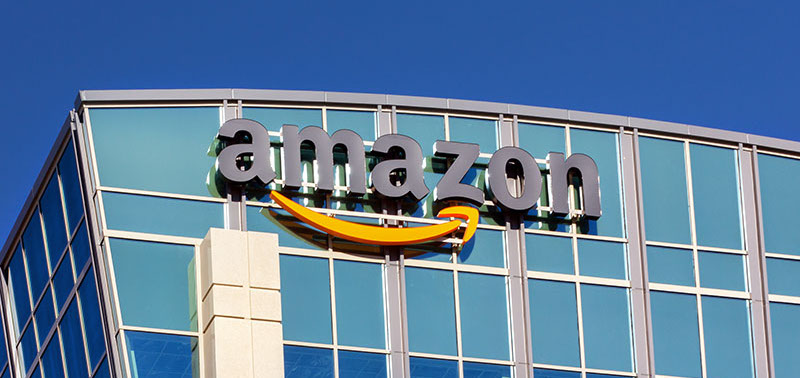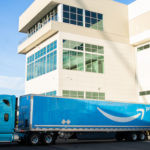Amazon Business recently sent shockwaves across the industry when it disclosed last year’s revenues were $25 billion, which marked a 150% increase from just two years ago.
While that may seem intimidating, opportunities abound for distributors, Mike Marks said during last week’s webinar, Take Your E-Commerce Capabilities to the Next Level, sponsored by Adobe. But companies need to re-think their next-generation e-commerce platforms and how they can provide a better B2C experience than large companies such as Amazon Business.
For the most part, distributors’ end customers can get most anything on Amazon Business, but what they lack from that platform is having human interaction to find and ship a part that is out of stock or missing on Amazon. While Amazon Business is attempting to forge mass customization on its e-commerce platforms, it’s not as nimble as distributors that have embraced digital technologies.
“Amazon is going to hit a wall because of their choices,” says Marks, the managing partner of Indian River Consulting Group. “They’re offering a wonderful choice that hasn’t been fully built out, it hasn’t fully scaled. Distributors, because of their ability to do mass customization, can run circles around them.”
Marks says digital transformations aren’t just about adopting more software and newer technologies. They also include distributors helping their customers make the best decisions on the best technology stacks on the way to creating a better value proposition — one that Amazon Business can’t touch — by including a human touch in B2C.
“My point is, when you start talking about this whole digital process in e-commerce, it isn’t just about technology,” Marks said. “Everybody gets lost in the technology.
“What’s happening now is the whole world is going through this process and it’s accelerating. But when you’re using it, you’re saying, ‘My customers are changing how they want to buy. I need to be there before they are, or they’ll go somewhere else and buy from somebody else.’”
Key elements of a digital distributor
During the webinar, Marks sketched out what fully digital distributors look like, including:
- They have value propositions tailored to clearly defined segments of customers who share similar journeys
- They have significant competitive advantage in their clearly defined customer segments, meaning higher net profit than competitors with either a cost advantage or a price premium, or both
- The customer experience is frictionless as they have happily joined the distributor ecosystem to help their own success
- This distributor buys right, selling at lower margins than their competitors because their SG&A expenses are 20% lower than theirs, and their EBITDA margins are in the top decile of their industry.
Marks says he doesn’t yet know of a distributor that has enabled all four of the above areas, but he does know of several that are hard at work on one or two of them.
“This is not theory. This is not what somebody is going to do someday,” Marks says. “There are people, depending on the industry, that are doing at least one of the four. They’ve got new customers, and they’ve got special solutions for these customers. They’re very well aligned. The other thing is they also have high profits.”
Finding your North Star
As part of their digital transformations to create new e-commerce platforms, distributors need to find and define a guiding North Star, according to Marks. That North Star includes deciding where to build and invest money on the new platforms. Marks says a North Star should include both the technology and digital points of view for both the distributor and its customers.
“You spend time describing where your customers are now and where you’re going to be at some point in the future,” he says. “What are the forces? How are they going to compete? What are they going to be doing differently? How do they want to buy? How are they going to sell, and you start thinking about the world that they’re in.
“The North Star just says what it’s going to look like. It doesn’t have to be precise. Then it’s all about capabilities. This is not about trying harder. This is saying ‘What capabilities do I need to have that I don’t have to actually provide this value to the customers at that point in time?’”
Marks says distributors should plot out their North Stars and then work backward from them by creating backward chaining.
“The beauty of this is that once you build this in terms of these capabilities, you just turn that thing around and that’s your digital roadmap,” he says. “There’ll be several work streams. The very first step is you have to define what you want to it to look like in the end, instead of just adding incremental things because they’re good ideas.”
Marks noted during the webinar that his presentation is chock full of links and other information to help distributors define and implement their digital strategies and e-commerce platforms in order to take on companies such as Amazon Business, but, more importantly, to create a more sticky and valuable experience for their own customers.
“You don’t have to compete with the same cost structures as Amazon,” he says. “But if you’re able to get to this point in terms of lowering your cost to serve and lower margins, even by 20%, you can combine that with the customer relationships and the other value propositions that you’ve always had in the marketplace to completely differentiate yourself from the more singular type of value proposition that Amazon offers.”
Related Posts
-
Online giant Amazon bringing five new buildings, 2,000 jobs to the metropolitan Detroit area.
-
Amazon's new fulfillment center in North Little Rock will create hundreds of new full-time jobs…
-
Amazon's new fulfillment center in Amarillo will create hundreds of new full-time jobs.





